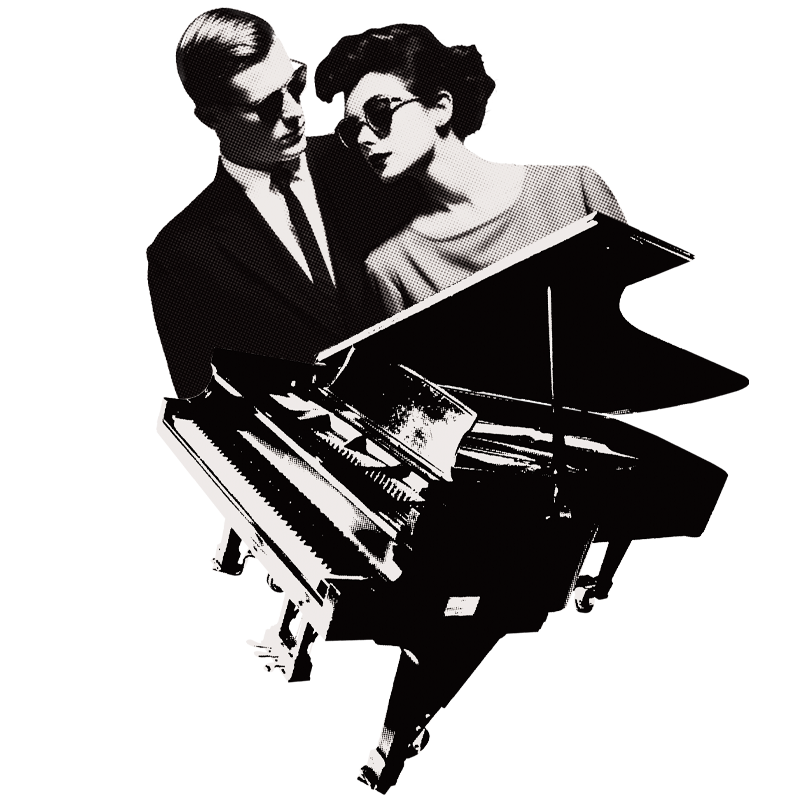
Juliet & Her Romeo
Our season opener!
Shakespeare's classic story comes to life through Prokofiev's moving ballet score.
Guest Artist
Katherine Liu, piano (2022 Arthur Fraser Competition Winner)
Immerse yourself in the rich soundscapes of Shaosheng Li’s Centuries - a work that is both deeply personal and universally resonant. Then, travel to Paris in the 1920s, a bustling city filled with creativity, innovation and joie de vivre as you experience Ravel’s Piano Concerto in G Major - featuring the 2022 Winner of the Arthur Fraser Competition: Katherine Lui, piano. Finally, you’ll be transported to the bustling streets of Verona, the vibrant marketplace, and the intense feud between the Montagues and Capulets. Sergei Prokofiev's "Romeo and Juliet" takes us there with music that is as dramatic and passionate as Shakespeare’s timeless tale.
Katherine Liu, piano, is sponsored by Val & Dennis Grady
Program Overview
Shaosheng Li: Centuries
Maurice Ravel: Piano Concerto in G Major
Featuring Katherine Liu, piano (Winner 2022 Arthur Fraser Competition)
Sergei Prokofiev: Romeo and Juliet – Selections from Suites 1 & 2
Ticketing Pro-Tip
All Koger Center tickets incur a $2 “Restoration Fee” per ticket. All tickets sold online or over the phone incur a sliding scale convenience fee (phone fee is lower). You can avoid internet and phone fees by visiting the Box Office in person.
Koger Box Office:
806 Park St, Columbia, SC 29201
(Free parking spots directly in front of Box Office window on Park St.)
Phone: 803-251-2222
Hours: Monday - Friday 9:00 a.m. - 5:00 PM
Please note, all single tickets for Koger events must be bought through Koger Center. Do not buy tickets from any other vendors because they will not be honored.
Program Notes
Li Shaosheng
“Centuries” from Towards the Ocean
Composer: born November 17, 1988, City Dalian, Liaoning Province, China
Work composed: 2023; commissioned by the Guangxi Symphony Orchestra
World premiere: April 21, 2023. Tang Muhai led the Guangxi Symphony Orchestra at the National Center for the Performing Arts in Beijing.
Instrumentation: piccolo, 2 flutes, 2 oboes, English horn, 2 clarinets, bass clarinet, 2 bassoons, contrabassoon, 4 horns, 3 trumpets, 2 trombones, bass trombone, tuba, timpani, tam-tam, triangle, marimba, wind chimes, suspended cymbal, shaker, naobo [medium-sized Chinese cymbals], tubular bells, snare drum, bass drum, vibraphone, glockenspiel, celesta, piano, harp, and strings
Estimated duration: 8.5 minutes
Li Shaosheng’s music has been praised by the New York Times as “deftly scored work that veers from lustrous Impressionist washes to folksy Ivesian polytonal clashes.” The first Chinese composer from that country’s Central Conservatory of Music to be admitted to the composition program at the Juilliard School, Li’s style integrates Chinese and Western musical languages and has strong artistic appeal. His works have been performed at festivals and ensembles around the world.
Li writes, “The piece [Centuries] is the first movement of the symphonic suite Towards to Ocean. It depicts the magnificent historical feat of Emperor Qin Shihuang’s [259 – 210 BCE] construction of the Lingqu Canal. The building of the Lingqu Canal linked the geographical regions of northern and southern China, which connected distinct ethnic groups for the first time. [In the two millennia] since then, the two regions have integrated their cultures, philosophies, ideologies, and technologies.
“I have employed the tonalities characteristic of northern Chinese music, particularly drawing inspiration from the melodic contours of Shaanxi folk singing. The piece uses diverse compositional techniques to portray the dramatic historical scenes from the aspects of time and space.”
Maurice Ravel
Piano Concerto in G major
Composer: born March 7, 1875, Ciboure, Basses-Pyrénées, France; died December 28, 1937, Paris
Work composed: 1929-31
World premiere: Ravel conducted the Lamoureux Orchestra at the Salon Pleyel in Paris on January 14, 1932, with pianist Marguerite Long
Instrumentation: solo piano, piccolo, flute, oboe, English horn, clarinet, E-flat clarinet, 2 bassoons, 2 horns, trumpet, trombone, timpani, bass drum, cymbals, slapstick, snare drum, triangle, wood block, harp, and strings
Estimated duration: 21 minutes
“[The Concerto in G major] is a concerto in the truest sense of the word: I mean that it is written very much in the same spirit as those of Mozart and Saint-Saëns.” – Maurice Ravel
Maurice Ravel had an affinity for musical styles of bygone eras; this is reflected in several works, like his 1917 suite Le tombeau de Couperin, inspired by the music of French Baroque composer François Couperin. For the Piano Concerto in G major, however, Ravel sought to create in his own work something more indefinable: the “absolute beauty” Ravel found in Wolfgang Amadeus Mozart’s music. “What Mozart created for the enjoyment of the ear is perfect,” said Ravel. “I believe that a concerto can be light-hearted and brilliant, and that there is no necessity for it to aim at profundity or big dramatic effects.”
Listeners might conclude from this remark that Ravel’s G major concerto is a superficial product, but it delivers in every sense, despite its author’s claims to the contrary. As biographer Madeleine Goss notes, “In none of his compositions is Ravel more completely master of his art than in this Concerto. It has been said to embrace all the essentials of his music: brilliance, clarity, elegance, originality; tenderness and simplicity in the middle part, and, in the last movement, daring vigor and brittle perfection.”
In 1928, after Ravel’s successful travels in America, he decided to write a concerto he could take on an upcoming European tour. Ravel intended to perform the solo part himself, but soon realized his failing health would not permit it. “The concerto is nearly finished and I am not far from being so myself,” Ravel acknowledged. To perform the solo part, Ravel recruited his friend, Marguerite Long, who thrilled at the opportunity to premiere Ravel’s concerto.
The Allegramente begins with a slapstick snap and a jaunty piccolo, followed by an equally bright, bouncy trumpet. Although present in the background from the opening bars, the piano makes its first solo declaration with a languid, bluesy melody. Throughout the first movement, Ravel alternates these rapid-fire bursts of energy with rhapsodic, jazz-inflected episodes.
The exquisite serenity of the Adagio assai belies the tremendous effort it required from both composer and pianist. Long wrote, “I told Ravel one day how anxious I was, after all the fantasy and brilliant orchestration of the first part, to be able to maintain the cantabile of the melody on the piano alone during such a long slow flowing phrase …‘That flowing phrase!’ Ravel responded. ‘How I worked over it bar by bar! It nearly killed me!’”
A snappy snare drum roll announces the Presto, a return to the jazzy energy of the Allegramente. At just under four minutes, the soloist drives the music forward with a modo perpetuo full of vivacious power, and the music’s effect on the ear is as crisp and effervescent as a sip of dry champagne on the tongue.
Sergei Prokofiev
Selections from Romeo and Juliet Suites No. 1 & 2
Composer: born April 27, 1891, Sontsovka, Bakhmutsk region, Yekaterinoslav district, Ukraine; died March 5, 1953, Moscow
Work composed: Romeo and Juliet was originally commissioned by the Kirov Ballet in 1934; Prokofiev completed it for the Moscow Ballet in 1935-6.
World premiere: The first orchestral suite premiered in Moscow on November 24, 1936, and the second had its first performance in Leningrad on April 15, 1937.
Instrumentation: piccolo, 2 flutes, 2 oboes, English horn, 2 clarinets, bass clarinet, 2 bassoons, contrabassoon, tenor saxophone, 4 horns, cornet, 2 trumpets, 3 trombones, tuba, timpani, bamboo wind chimes, bass drum, bells, cymbals, maracas, snare drum, tambourine, triangle, xylophone, celeste, piano harp and strings
Estimated duration: 44 minutes
Sergei Prokofiev’s version of Shakespeare’s star-crossed lovers is some of the most evocative music ever written about this tragic tale. Memorable as the music is, however, it did not satisfy the Kirov Ballet’s artistic directors, who commissioned it in 1934. After several squabbles with Prokofiev, they ultimately rejected his score, deeming it “undanceable.” Undaunted, Prokofiev took his score to the Moscow Ballet, which premiered the full ballet in 1937.
Prokofiev’s original storyline, which dared to script a happy ending in which Romeo finds Juliet alive, outraged the Kirov’s artistic director. Prokofiev justified this shocking reversal with the very practical explanation that dead characters cannot dance, but pressure from critics and ballet administrators, as well as the observation that Prokofiev’s music was essentially tragic in nature, persuaded the composer to use Shakespeare’s ending. Prokofiev’s original orchestration also caused problems for the dancers, who complained they were unable to hear it from the stage. Although Prokofiev grumbled to the dancers that “You want drums, not music!” he eventually complied with their request for a fuller sound.
Since Prokofiev initially had such trouble getting the full ballet of Romeo and Juliet onstage, he decided to arrange two orchestral suites of music from the ballet, each with seven movements. In 1938, Prokofiev himself conducted both suites while touring Europe and the United States. The music was well received; one New York critic stated, “Prokofiev has written music for the masses and at the same time has attained extraordinary nobility.” Ten years later, Prokofiev assembled a third suite.
Of his music, Prokofiev said, “I have taken special pains to achieve a simplicity which will, I hope, reach the hearts of all listeners.” Tonight’s selections, chosen by Music Director Morihiko Nakahara, are drawn from both of Prokofiev’s original two suites; the episodic nature of his music effectively captures the essence of both characters and narrative. From the opening shriek of “The Montagues and Capulets,” Prokofiev leaves us in no doubt as to the tragic outcome of the story, while the dark, brass-heavy main theme makes the two families’ conflict powerfully clear. “Juliet as a Young Girl” features quicksilver writing for strings and winds, evoking her youthful spirit, and a memorable flute solo. “The Arrival of the Guests’” ceremonial pomp alternates with interludes in which the guests cautiously mingle (or carefully avoid) one another in the ballroom, while the ambiguous tonality of “Masks” conveys the equally ambiguous identity of the dancers in their elaborate face masks. Prokofiev’s music for the balcony scene features an ascending theme that breaks open like a morning sunrise, as Romeo and Juliet realize their mutual love; after the initial theme, the full orchestra plays a rich variation, as the young lovers’ passion grows. A brief Dance featuring an oboe solo follows.
“Friar Laurence’s” bassoon solo is measured and steady, much like the friar himself. “The Death of Tybalt” begins in frantic chaos (racing strings) as Tybalt and Romeo duel in Verona’s streets, and shifts to a death-march of brasses signaling Tybalt’s death at the hands of an enraged Romeo. Dawn breaks over the lovers asleep in Juliet’s bed (flute solo accompanied by strings), and Romeo reluctantly departs as echoes of the balcony music return. Prokofiev expresses Romeo’s anguish at Juliet’s tomb when he thinks her dead. Intense, heartrending strings and discordant comments from the brasses alternate with fragments of the balcony theme once again, as the heartbroken Romeo drinks fatal poison and collapses across Juliet’s tomb – just before she awakens from her drugged sleep.
© Elizabeth Schwartz
NOTE: These program notes are published by the South Carolina Philharmonic for its patrons and other interested readers. Any other use is forbidden without specific permission from the author, who may be contacted at http://classicalmusicprogramnotes.com.
AUTHOR BIO: Elizabeth Schwartz is a writer and music historian based in Portland, OR. She has been writing program notes for more than 25 years, and works with ensembles, soloists, and music festivals across the United States and around the world. Ms. Schwartz has also contributed to NPR’s “Performance Today,” (now heard on American Public Media). http://classicalmusicprogramnotes.com
Parking
The Koger Center for the Arts is located in downtown Columbia at the corner of Assembly and Greene Streets, 1051 Greene Street. Parking is available at the Discovery Garage behind the building (usually around $10), accessible off Park Street. Additional garages and street parking are located at least one block away, which is a further walk to the theater but may help you avoid the pre-concert rush.
Dining & Hotels
There are excellent restaurants and hotels in the downtown and surrounding areas for every budget.
Restaurants
- 1801 Grille
- Blue Marlin Steaks & Seafood
- Bourbon Columbia
- COA Agaveria y Cochina
- Hall’s Chophouse
- Hunter-Gatherer Brewery & Ale House
- Kaminsky's Dessert Cafe
- M Vista
- Mr. Friendly's New Southern Cafe
- Motor Supply Co. Bistro
- Pearlz Oyster Bar
- Ristorante Divino
- Terra
Columbia Hotels
New to Symphonic Music?
Here are a few pointers on what to expect.
Other Ways to Purchase
There are other ways to purchase single concert tickets through the Koger Center Box Office.
By Phone
- Charge by phone at 803.251.2222.
- Open 9 a.m. to 5 p.m., Monday – Friday.
- American Express, Discover, MasterCard, and Visa accepted.
- Additional charges applicable.
- Single tickets are not available through the SC Philharmonic office.
In-Person at the Koger Center
- Located at 806 Park St., Columbia SC 29201
- Open 9 a.m. to 5 p.m., Monday - Friday.
- Accept cash, American Express, Discover, MasterCard, and Visa.
- No additional fees for in-person purchases.
Concert Night
- Purchase any remaining tickets at the Koger Center ticket kiosk on concert night starting one hour before each concert.

 7:30 PM
7:30 PM
 Koger Center for the Arts
Koger Center for the Arts